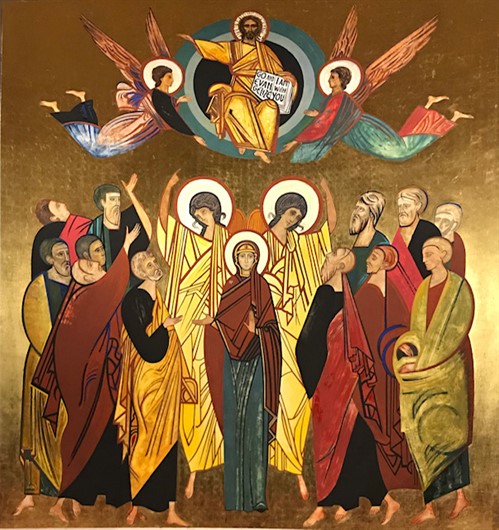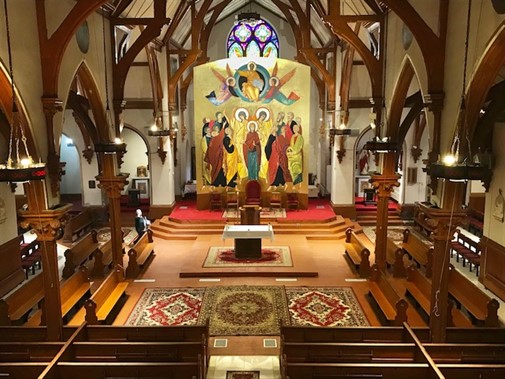The Ascension

The Lord, by descending to hell, has annihilated the opponent, and with his ascension, he has exalted men. The icon announces the ‘victory over death, hell, and the purpose of salvation’. Our humanity is definitely introduced in the celestial existence through the humanity of Christ. Hence, our home is in heaven. “But God being rich in faithful love,through the great love with which he loved us, even when we were dead in our sins, brought us to life with Christ -- it is through grace that you have been saved -- and raised us up with him and gave us a place with him in heaven, in Chirst Jesus.” (Ep. 2: 4-6). The ascension is indeed the beginning of Pentecost, which is the fulfilling of Jesus’ prayer: “I shall ask the Father, and he will give you another Paraclete to be with you forever” (Jn 14: 16). Christ, in a circle of cosmic spheres where he radiates his glory, extends his right hand as a gesture of blessing as well as sending us to evangelize. “And raising his hands, he blessed them. Now, as he blessed them, he withdrew from them and was carried up to heaven” (Lk 24: 50-51). By the sign of this permanent blessing, the apostles become the foundation of the church. On his left hand, he holds the scroll with the scriptures that contain the Good News. The mission of salvation is carried out. Now, it should be freely accepted by each person. He sent them to evangelize: “Go, therefore, make disciples of all nations; baptize them…And look, I am with you always; yes, to the end of time.” (Mt 28: 19-20). The joy of the apostles bursts in spite of Christ’s departure because his promise remains: “I am with you and no one will prevail against you”. The blessed Virgin, image of the church, appears between two angels under Christ who is the head of the church. The ends of the raised arms from the angels and Mary’s feet make the three points of a triangle signifying the Holy Trinity which is the imprint of the church. The Apostles, divided into two equal groups, form a circle and show the church sealed in the holy and eternal love of the Father and the Son. Saint Peter is standing in the group of the Apostles that are on the right side of the Virgin Mary. To the left, we see Saint Paul, who certainly was not a witness of the ascension, however, he belonged to the nucleus of the Apostles. Christ, in his departure, is held by two angels who were the witnesses of His mysterious and astonishing incarnation. In the icon, inverting the direction of the movement of Christ, signifies the return of the Lord: Parusia. “This Jesus ...will come back in the same way as you have seen him go to heaven” (Acts 1: 11). This is what the two angels announce amongst the Apostles.
